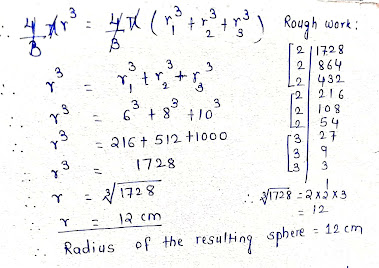CBSE Class 10
– Science
Human Eye & The Colourful World
5. A myopic person uses specs of power – 0.5 D. What is the distance of far point of his eye? (200 cm in front of the eyes)
6. The far point of a myopic person is 150 cm in front the eye. Calculate the focal length and power of a lens required to enable him to see distant objects clearly. (-150 cm, -0.67 D)
7. A person wears eye glass of focal length 70 cm what is the far point of the person? (70 cm in front of the eyes)
8. If your eye glasses have focal length 60 cm what is your near point? (42.9 cm in front of the eyes)
9. A person suffering from far – sightedness wears a spectacle having a convex lens of focal length 50 cm. What is the distance of the near point of his eye? (50 cm in front of the eyes)
10. The near point of a hypermetropic eye is at 75 cm from the eye. What is the power of the lens required to enable him to read clearly a book held at 25 cm from the eye? (+2.67 D)
11. A person wants to read a book placed at 20 cm, whereas near point of his eye is 30 cm. calculate the power of the lens required. (+1.67 D)
12. A certain person has minimum distance of distinct vision of 150 cm. He wishes to read at a distance of 25 cm. What focal length glass should he use? What is the nature of eye defect? (+30 cm, convex lens)
13. The near point of a hypermetropic eye is 1 m. What is the power of the lens required to correct this defect? Assume that near point of the normal eye is 25 cm. (+3.0 D)
14. A person needs a lens of power +3 D for correcting his near vision and -3 D for correcting his distant vision. Calculate the focal lengths of the lenses required to correct these defects. (+33.33 cm, -33.33 cm)
15. A 52-year-old near-sighted person wears eye glass of power of –5.5D for distance viewing. His doctor prescribes a correction of +1.5D in the near-vision section of his bifocals this measured relative to the main parts of the lens:
a. What is the focal length of his distance viewing part of the lens? (-18.18 cm)
b. What is the focal length of the near vision section of the lens? (+66.67 cm)
a.
What kind of defect of vision he is suffering
from? (Myopia and Hypermetropia)
b. What kind of lenses will be required to increase his range of vision from 25 cm to infinity? (Concave lens and Convex lens)






